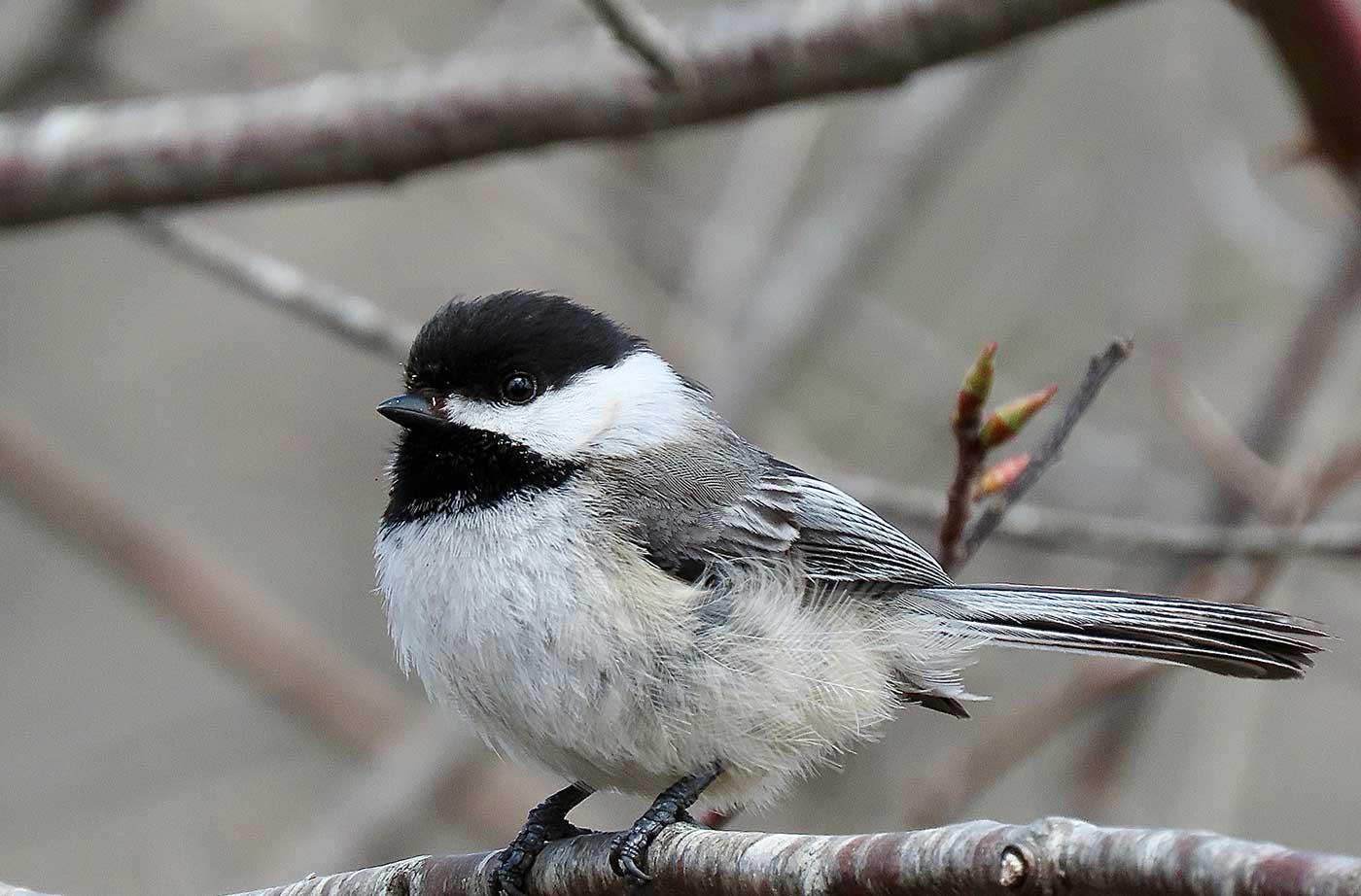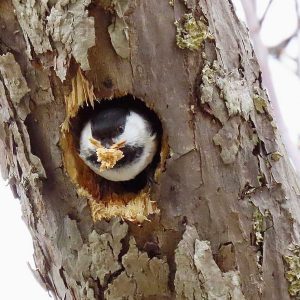
Photo by Kristen Lindquist
Black-capped Chickadee
Poecile atricapillus
Cool fact: Studies have shown that the Black-capped Chickadee grows new brain cells every fall, in part to help it remember where it has cached the thousands of seeds it hopes to feed on through the winter ahead.
The chickadee was chosen as the Maine State Bird in 1927. Although the specific species was not identified (Maine is also home to the less-common Boreal Chickadee, which in Maine is primarily limited to softwood forests of northern, Down East, and higher elevations), almost all depictions of the state bird, including on the license plate, are of the Black-capped. It pairs well with the Maine State Tree, the white pine, on which it may often be found. (The Black-capped Chickadee is also the state bird of Massachusetts and the provincial bird of New Brunswick.)
In midwinter when the woods are cold and quiet, and it seems most birds have flown south, we can almost always count on the Black-capped Chickadee to remain nearby. This nonmigratory songbird visits our bird feeders year-round. The easily recognizable black-and-white chickadee charms us with its puffball cuteness, bright black eyes, and perky attitude on even the coldest days. During the long winter nights, it hunkers down in a tree cavity, sometimes with other chickadees for warmth. In extreme cold, the chickadee is one of the few avian species that can enter a state of torpor, in which it temporarily lowers its body temperature to survive.

Black-capped Chickadee in nest hole in tree. Photo by Kristen Lindquist
A bird most Mainers can identify by sight, the chickadee’s eponymous call also makes it easy to identify by voice. Studies have noted at least 15 different sounds in the Black-capped Chickadee’s vocal repertoire. A version of the familiar chickadee-dee-dee call, for instance, lets other birds know about food. The highly social chickadee forages in small flocks from late summer through the winter, often accompanied by titmice, nuthatches, kinglets, vireos, and more. So following the sounds of chickadees can be a great way to locate other bird species. Within their foraging flocks, chickadees also exchange different calls as a way of keeping track of one another, express aggression, or establish individual status in the group hierarchy.
Chickadees use their voices to serve as the “neighborhood watch,” as well. A more emphatic version of chicka-dee-dee warns of potential danger like a cat or a hunting raptor. The more dee-dees, the greater the perceived threat. Several dozen other bird species may respond to this alarm call, some also joining in with chickadees to mob or dive at the threat in attempts to drive it away. Birders, too, have learned to follow these calls in the hope of finding the owl or hawk that might have instigated them.
As early as January the male chickadee begins singing his short, sweet fee-bee song, which he uses to attract a mate and assert his territory. Females also sing, though less often. Singing becomes more frequent as spring approaches and paired birds begin to split off from the flock.
Come spring, the monogamous chickadee pair will find a tree cavity or bird house or work together to excavate their own nest hole in a dead tree, carrying all the wood chips away in their tiny bills. A chickadee clutch may contain as many as a dozen eggs, but it usually only raises one brood a season.
Although the Black-capped Chickadee is impacted, along with so many other bird species, by cat predation, window collisions, and the effects of climate change, the current population is abundant and widespread. Hopefully, this adaptable little bird will continue to entertain us through the four seasons, in our Maine woods and backyards, for generations to come.
Kristen Lindquist is a birder, naturalist, and poet living in Camden, Maine.









